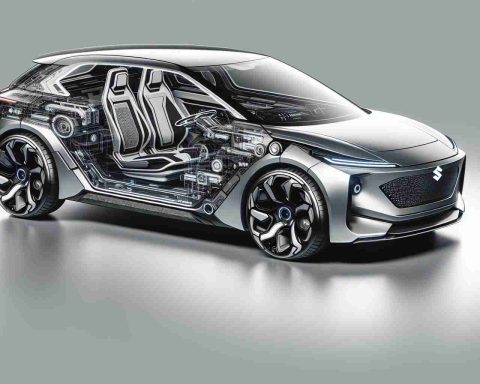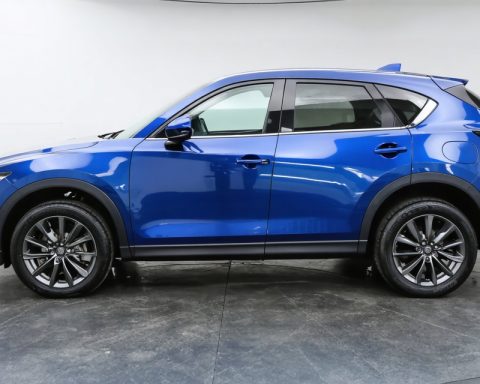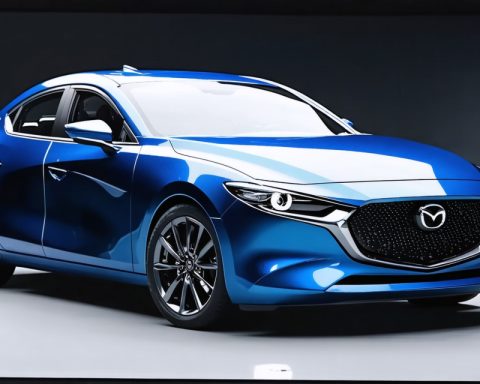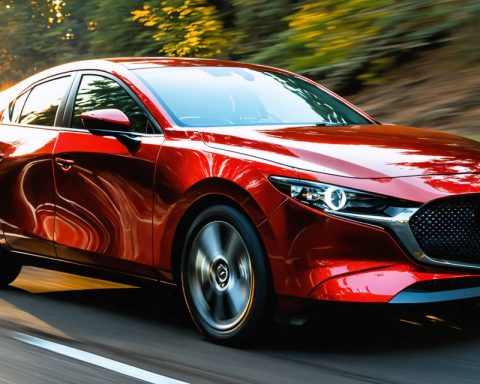- Oregon has surpassed 100,000 electric vehicle (EV) registrations, marking a significant milestone in its climate efforts.
- The rise of EVs challenges traditional transportation funding, as gas tax revenues decline, revealing a $1.8 billion funding shortfall.
- The OReGO program, a voluntary per-mile road usage charge, aims to address this gap but is currently underutilized, with fewer than 1,000 participants.
- Jim Whitty and Sen. Bruce Starr emphasize the importance of innovative road usage charges as fuel taxes become less effective.
- Participants in OReGO may benefit from reduced DMV fees by committing to a 2-cent-per-mile charge, highlighting potential financial incentives for users.
- The program showcases a public-private partnership where private firms manage mileage tracking and billing.
- Oregon’s approach may serve as a model for sustainable financing as other states adopt electric vehicles and seek transportation funding solutions.
Oregon’s landscape, cloaked under evergreen canopies, is now noticeably dotted with electric vehicles as the state exceeds 100,000 EV registrations—a pivotal achievement in its climate crusade. However, this green revolution, while promising a cleaner future, presents a challenge for the state’s faltering transportation coffers. As gasoline tax revenues wane from the rise of fuel-efficient cars, Oregon lawmakers grapple with a looming $1.8 billion transportation funding gap.
The state’s existing gas tax, standing at 40 cents per gallon, was designed for an era where gasoline powered the majority, not for the electric and mileage-conscious vehicles now gaining traction. With EVs accounting for approximately 5% of the state’s vehicle registrations over the past decade, the state is probing new fiscal paradigms to prop up its essential infrastructure.
Enter the OReGO program, a novel initiative launched in 2015, marking Oregon as a trailblazer in innovative tax reform with a voluntary per-mile road usage charge. Yet, despite its promise, this option remains vastly underutilized, attracting fewer than 1,000 participants. This discrepancy is stark against the broader context of a fast-greening automobile fleet.
Jim Whitty, a seasoned voice in Oregon’s transportation policy, underscores the importance of a road usage charge. This charge can equitably reflect road use and aid in revenue generation, similar to the bygone efficacy of fuel taxes. This model links highway maintenance with actual vehicular wear—a necessity as traditional revenue streams dry up.
The prescient foresight of Sen. Bruce Starr, who decades ago envisioned the fiscal impacts of hydrogen and electric technologies, has shaped today’s legislative solutions. His proactive lens facilitated the conception of OReGO, which offers a path to reform. Electric vehicle enthusiasts and those procuring cars with superior fuel efficiency could benefit from reduced Department of Motor Vehicles fees by committing to a 2-cent-per-mile fee.
Drivers involved in the program can opt to track their mileage using devices or car software managed by private firms. These firms handle billing, ensuring only in-state travel is taxed, channeled via an efficient public-private synergy.
Tim Martinez exemplifies the program’s efficacy, simultaneously advocating for its expansive adoption. The OReGO program not only fosters administrative efficiency but also exemplifies sustainable financing. As electric vehicles become emblematic of Oregon’s green aspirations, the state must reconcile this eco-friendly race with a sustainable financial strategy.
The essence of Oregon’s success lies not only in expanding EV numbers but ensuring these vehicles contribute to, rather than deplete, the transportation economy. It’s a roadmap other states might soon find themselves navigating as the country accelerates toward an electrified future.
How Oregon is Pioneering Sustainable Transportation Funding Amidst an Electric Vehicle Boom
Oregon’s Green Transition and the Transportation Funding Challenge
Oregon is witnessing a significant transformation as electric vehicles (EVs) proliferate across the state, marking a milestone with over 100,000 EV registrations. While this shift is a positive step toward reducing carbon emissions and fostering a cleaner environment, it presents a substantial challenge for the state’s transportation funding, historically reliant on gasoline tax revenues. With EVs now representing approximately 5% of the state’s vehicle registrations, Oregon lawmakers face the daunting task of addressing a projected $1.8 billion funding gap.
Understanding the Current Funding Structure
The traditional gasoline tax in Oregon, currently at 40 cents per gallon, was effective when gasoline powered most vehicles. However, as more drivers move toward fuel-efficient and electric cars, revenues from this tax have significantly dropped. Essential infrastructure projects now face financial uncertainty without a new source of revenue.
The OReGO Program: A Novel Funding Solution
Oregon’s innovative solution to the transportation funding dilemma is the OReGO program, introduced in 2015. This voluntary program charges drivers a per-mile fee instead of the conventional gas tax. The fee structure aims to rectify the inequity posed by fuel-efficient and electric vehicles that contribute less to road maintenance costs under a standard gas tax system.
Key Benefits of the OReGO Program:
– Fairness: Ensures that all drivers contribute equitably to road maintenance, proportionate to actual road use.
– Efficiency: The program operates through private firms managing mileage tracking and billing, promoting an efficient public-private partnership.
– Appeal to Eco-Conscious Drivers: Offers a reduced DMV fee for participants who commit to the 2-cent-per-mile charge.
Program Challenges and Adoption Rates
Despite its potential, the OReGO program remains underutilized, with fewer than 1,000 participants. This low adoption highlights the need for increased public awareness and understanding of the program, along with possible enhancements to the participation framework.
Industry Trends and Future Directions
As Oregon leads in crafting sustainable transportation funding models, other states may look to replicate its strategies as electric vehicle adoption grows nationwide. Policymakers at both state and national levels are recognizing the need for innovative approaches to infrastructure financing as the shift toward alternative vehicle technologies continues.
Actionable Recommendations for Oregon and Other States
1. Increase Public Engagement: Develop robust outreach and education campaigns about the benefits and simplicity of enrolling in OReGO.
2. Enhance Incentives: Reevaluate and potentially expand economic incentives to encourage broader participation and offset initial expenses for joining the program.
3. Leverage Technology: Continue improving technology solutions for milage tracking and data privacy, making it easier for drivers to participate.
4. Monitor and Adapt Policies: Regularly assess the effectiveness of the OReGO program and others like it, adapting policies as necessary to ensure long-term viability.
Quick Tips for EV Owners
– Consider enrolling in the OReGO program to benefit from potential savings on DMV fees.
– Stay informed about state-level policy changes that could affect vehicle ownership costs.
– Take advantage of federal and state tax credits for purchasing an electric vehicle.
Conclusion
Oregon’s approach serves as a pioneering blueprint for maintaining sustainable transportation funding amidst an evolving automotive landscape. By embracing programs like OReGO, which align vehicle use with road maintenance contributions, Oregon sets an example for states nationwide working toward a sustainable and equitable transportation future.
For more information on electric vehicle initiatives and sustainable practices, visit Oregon’s Official State Website.













